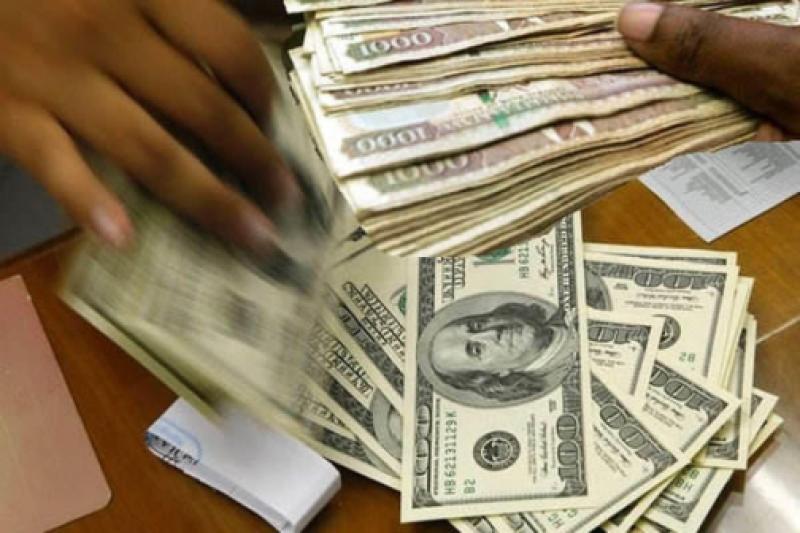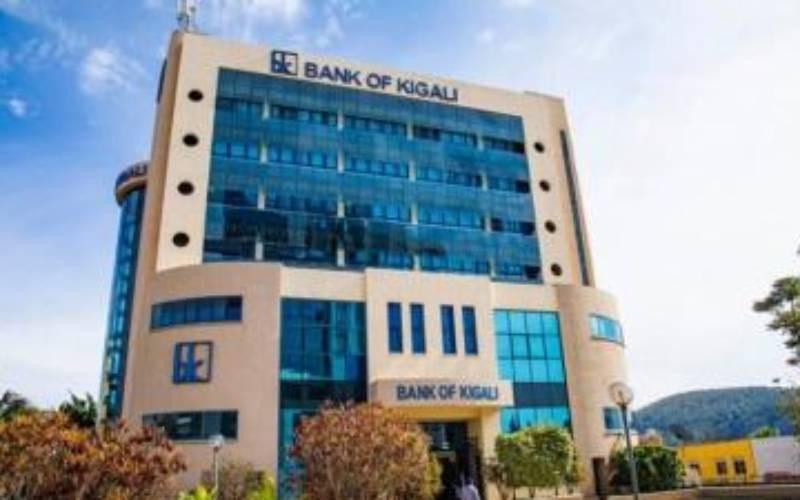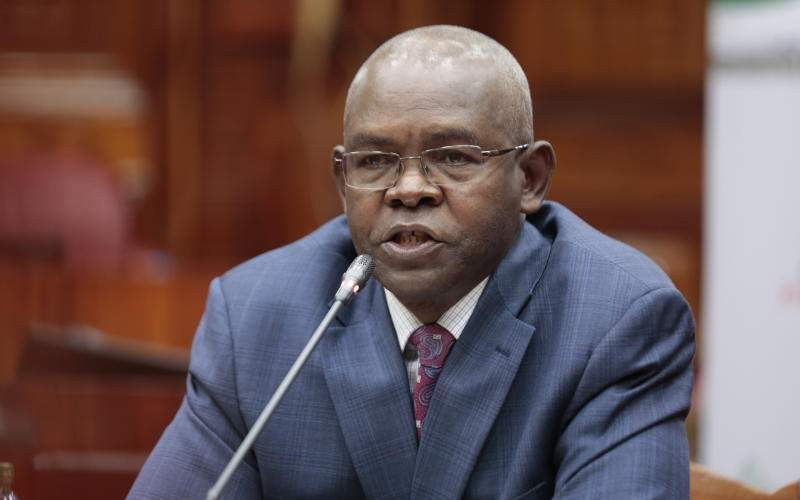
The move by the Central Bank of Kenya (CBK) to pump in up to Sh41.1 billion into the market in the three months between April and June to manage the shilling did not stop the exit of foreign investors from the market.
According to the Kenya National Bureau Statistics (KNBS), in the second quarter of this year, there was a net use of Sh41.1 billion to the foreign exchange reserves.
“Gross official reserves stood at Sh904.8 billion as at the end of June 2018 from Sh889.7 billion as at end of June 2017,” KNBS’ balance of payments said.
According to data by the statisticians, in those months, money from foreigners who control 70 per cent of the Nairobi securities exchange dropped by 677 per cent.
“Financial account net inflows declined to Sh18.8 billion in the second quarter of 2018 from Sh140.8 billion in the second quarter of 2017. This was on the back of decreased inflows coupled with increased debt securities outflows mainly in portfolio investments and other investments categories,” KNBS said.
This has generally depressed the Kenyan equities market, with the benchmark index, the NSE-20 share standing at 2,875.51 points down from 5,474 points on February 15, 2015.
Curiously, since 2015, the US Federal Reserve has raised rates by 0.25 eight times till last Wednesday when it topped 2.25 per cent, the third hike this year. Meanwhile, during this time the Kenyan shilling has held steady, averaging Sh100 units against the dollar despite the massive dollar outflows and risk sell off at the bourse.
Even when the International Monetary Fund (IMF) withdrew its insurance support for the shilling this month, the local unit only flinched to Sh101 against the greenback. It stabilised to Sh100.8 in Friday’s trading.
A trader who did not want to be named for fear of reprisals by CBK said investors think the Kenyan currency is too expensive and it is only a matter of time before it weakens.
“Foreigners are selling off because the shilling is overvalued in the wake of the emerging market sell-off. If you compare it to the Nigerian Naira which devalued and is facing an oil market resurge as well as Egypt, many are asking that what is keeping the shilling so stable,” the trader said.
According to the CBK, the shilling is free floating and Governor Dr Patrick Njoroge denies any efforts to prop it.
“It is a matter of semantics for some of these people calling the shilling naked after the expiry of the IMF facility, but challenge them to show you their workings,” Dr Njoroge said during the Monetary Policy briefing last week. However, the market is scared of the regulator, especially the Deputy Governor Sheila Mmbijjewe who cracks down on commentaries and institutions that try to predict the direction of the currency.
In the past, while economists could troop to Nairobi, measure the current account and budget deficit, weather and balance of payments to try and predict the direction of the currency, that has become rare.
But the investor conversations continue in hushed tones in boardrooms.
Stay informed. Subscribe to our newsletter
Only frontier markets-focused investment bank Renaissance Capital recently dared to put the shilling at Sh105 units against the dollar by the end of next year.
“We are not talking about the Argentine Peso that went down from 18 to 27 despite interest rates of 60 per cent. It is not that sort of depreciation but we see the fiscal side driving it,” said Charles Robertson, the RenCap global chief economist.
Economic performance
Half-year financial market reports of investment banks and stockbrokers also show that about half of the market intermediaries posted losses - a move attributed to depressed market activity and high administrative costs.
A market analyst observed that the NSE is wrongly tied to the economic performance, saying even though the current gross domestic product (GDP) number, the market became depressed - a clear indication of this fallacy.
“If you look at the GDP, it is agriculture based at 25 per cent of the economy and the agriculture counters make up 0.1 per cent of the market of the market. Kenya is a service driven bourse with the likes of banks, East African Breweries Ltd, BAT and Safaricom which make up 70 per cent of the market,” the analyst who also requested anonymity said.
It is no wonder that the NSE has suffered a flogging ever since Parliament voted to retain the rate caps with the equity index falling 14 per cent this quarter, the most among 95 global indexes tracked by Bloomberg.
However, Dr Njoroge is optimistic that the market is fairly doing well compared to her peers. “Kenya has not been the worst performing stock market I mean let me not even start with Turkey. If we look at figures since June capitalisation was 14 per cent down and if you add the forex exchange market, it comes to 14.5,” Dr Njoroge said.
“Tanzania’s capitalisation is down 9.4 per cent if you add foreign exchange it comes to 8.8 and Uganda is down 14 per cent plus foreign exchange it is down 15.7 per cent,” he added.
Renaldo D’Souza, research, and investment analyst at Sterling Capital, also said the NSE recovered last week after reaching a two-year low the previous week. “Several large-cap stocks including Safaricom, Equity, KCB reached oversold positions (a position where stocks are trading below levels considered their correct valuation). Foreign investors and local fund managers have taken advantage of the attractive prices and took up positions,” he said
The performance of the NSE can be attributed to both local and global macroeconomic factors.
The analysts noted that the uncertainty on the removal of interest rate caps and the value added tax on petroleum products as well as the expiry of the standby credit facility with the IMF had a negative impact on the bourse.
Renaissance Capital’s sub-Saharan Africa Economist Yvonne Mhango said the expectations were the rate cap was to be removed affording banking counters more room to make money. “I know investors that we speak to have been waiting for some sort of resolution many have been hoping that even if the rate cap is not repealed, many were of the expectation that it will at least be reformed,” Ms Mhango said.
“That was supposed to be some sort of trigger for some favourable outcome in terms of amending the rate cap would have seen them buy,” she said.
However, Kenya is a frontier market and is feeling the pinch of global preference for a stronger US economy and more attractive rates of US Treasuries that is drawing dollars from emerging and frontier markets.
“On the global dynamics generally risk aversion has increased so there has been limited interest in frontier and emerging markets which includes Kenya. This means Kenya is being affected by global dynamics as in appetite has fallen but also because banks make up the biggest part of the index and with this overhang of the rate cap it has dampened interest,” Ms Mhango said.
“What am getting at is that if you are a portfolio manager and you want to balance markets, right now there is a move towards the developed markets because the interest rates are higher,” she said, adding: “Even though Kenya may do the right thing are you really going to go in a bigger way when the US is offering higher interest rates and it is safer compared to Kenya.”
Renaldo D’Souza also said that on the global front, rising US treasury rates and the sterling performance of US stock indices have given foreign investors alternatives to the frontier and emerging markets especially following the devaluation of currencies such as the Turkish Lira and the trade disputes between the US and China.
“Kenya is a victim of global risks as the market is controlled by foreign investors. The capital outflow from emerging and frontier markets are affecting the NSE and we should be concerned in the short term. We should also look at the performance of the US and European economies that are on the recovery path and investor capital is directed to these markets,” said the research analyst. What can be done to resuscitate the market?
The Capital Markets Authority even dreamed of rivalling betting firms.
CMA which is seeking to increase the number of listed companies under its ten-year master plan conducted the Low Uptake of Capital Markets Products and Listings survey between April and June this year.
The study found out that investors feel that they could get more money from investing in real estate and speculating over the short-term rather than put money in the market.
“The capital market master plan set down a clear target of achieving three to four Gems listing annually but this target has not been achieved despite concerted industry efforts. New products have also been introduced with low uptake witnessed,” said CMA Chief Executive Paul Muthaura.
Deepak Dave of Riverside Capital says Gems should be broadened for all innovative financing instead of waiting for this mythical flooding of SME equity raisers. “Make gems a listed investment, capital gains tax-free for three years and watch the market grow,” he said. Mr D’Souza said there are little information and a great deal on the financial performance of GEMS and this is the reason why investors are reluctant to invest in them.
“Historically, investors prefer well known large and medium cap companies with a history of good financial performance. The financial performance of these companies are more or less predictable in the medium term and this reduces investment risk,” Renaldo D’Souza said.
The Gems section was expected to list 19 firms by 2017 and 39 listings by 2023 has only attracted five firms since it was launched in 2013.
In 2016, only one firm K-Shoe subscribed to the market joining HomeAfrica, Kurwitu Ventures, Flame Tree Group, and Atlas Development in the segment.
Price corrections
Businesses fear to list because they have witnessed other firms lose credibility after their share price plummeted due to price corrections and market valuations after listing.
“The study identified the key factors leading to low product uptake including reputation risk exposure for potential issuers to post-offer or listing price correction following professional valuation,” the CMA boss said.
The new baby, K-Shoe operating under Nairobi Business Ventures at the bourse sunk into a Sh32.8 million loss just a year after listing and its share price sunk from Sh8 to Sh1.15.
Home Africa is trading at 85 cents per share from a high of Sh25 in 2013 while Flame Tree Group is trading at Sh3.45.
Atlas was suspended from the bourse after failure to resolve listing troubles in London. CMA has also proposed Initial Public Offering (IPO) which it says may lift appetite at the NSE since the last listings including Safaricom and Kenya Electricity Generating Company exited the market to oversubscription.
“An IPO would have to be guaranteed to be successful if it was to be the solution. There is cash waiting to deploy but in a slow market, no one can guarantee returns that can match the sovereign, so why take the risk? “The tax-free infrastructure bond, for example, is more attractive bet,” Deepak said.
Sterling Capital said that IPOs now will do little to create interest at the NSE due to the generally poor performance of listed stock prices and their financial performance.
“The economy in our opinion is on a recovery path but not in a position where its performance will have an impact on the financial performance of the listed companies,” it said.
 The Standard Group Plc is a
multi-media organization with investments in media platforms spanning newspaper
print operations, television, radio broadcasting, digital and online services. The
Standard Group is recognized as a leading multi-media house in Kenya with a key
influence in matters of national and international interest.
The Standard Group Plc is a
multi-media organization with investments in media platforms spanning newspaper
print operations, television, radio broadcasting, digital and online services. The
Standard Group is recognized as a leading multi-media house in Kenya with a key
influence in matters of national and international interest.
 The Standard Group Plc is a
multi-media organization with investments in media platforms spanning newspaper
print operations, television, radio broadcasting, digital and online services. The
Standard Group is recognized as a leading multi-media house in Kenya with a key
influence in matters of national and international interest.
The Standard Group Plc is a
multi-media organization with investments in media platforms spanning newspaper
print operations, television, radio broadcasting, digital and online services. The
Standard Group is recognized as a leading multi-media house in Kenya with a key
influence in matters of national and international interest.








